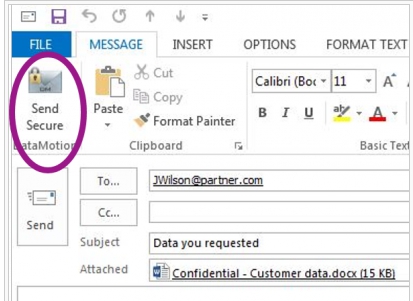Send secure email in Outlook 2016 and 2013 using digital signature by Svetlana Cheusheva updated on September 11, 2018 4 Comments In this article, you will learn about Outlook digital signature, encrypting email connections with SSL /TLS, and other ways to send secure email in Outlook 2016 - 2010.
- Microsoft Outlook Send Secure Button Phone
- Microsoft Outlook Send Secure Button Online
- Microsoft Outlook Secure Messaging
- Send Secure Email
- Microsoft Outlook Send Secure Button Windows 10
Hi Jackie,
Thank you for posting your query in Microsoft Office Community.
Please provide us more information to understand the issue better:
1) What do you mean by, ‘voltage send secure button’?
- Recalling a Secure Message in Outlook. Professional users have the ability to recall a secure message even if recipients have already read it. Recalling a secure message in Outlook is as simple as selecting the message in your sent items, and clicking the Recall Message button.
- If you have not Classic Menu for Outlook 2010 and 2013 installed, you can Open Outlook 2013 or 2010. Click File and then click Options. Click on Trust Center and click on Trust Center Settings. Click on E-mail Security. The encrypted setting is in the right pane of the window. Check the setting you want, and then click Ok to finish it.
2) What happens when you normally try to send emails from Outlook?
3) Are you getting any exact error message?
4) Mention the type of email account configured in Outlook (POP3, IMAP, Exchange ActiveSync (EAS) or Exchange Server Account)?
Please post to us with the required information to understand the issue better.
Thank you.
Did this solve your problem?
Sorry this didn't help.
Great! Thanks for marking this as the answer.
How satisfied are you with this reply?
Thanks for your feedback, it helps us improve the site.
How satisfied are you with this response?
Thanks for your feedback.
Did this solve your problem?
Sorry this didn't help.
Great! Thanks for marking this as the answer.
How satisfied are you with this reply?
Thanks for your feedback, it helps us improve the site.

How satisfied are you with this response?
Thanks for your feedback.
Microsoft Outlook Send Secure Button Phone
When you encrypt a message in Outlook 2013, your system scrambles the contents of your outgoing message so that only your intended recipient can read your message. Back in the days of radio, millions of children loved to exchange “secret” messages that they encoded with Little Orphan Annie’s Secret Decoder Ring. Outlook does something similar, using a feature called Encryption.
Unfortunately, you don’t get a colorful plastic ring with Outlook. On the other hand, you don’t have to save your box tops to get one — the decoder is built right into Outlook.
Microsoft Outlook Send Secure Button Online
Before you can send someone an encrypted message using Outlook’s Encryption feature, these criteria have to be met:

Both you and the person to whom you’re sending your encrypted message need to have a digital certificate.
Your intended recipient needs to have sent you at least one message with a digital signature. That way Outlook recognizes that person as someone you can trust. Outlook can be pretty suspicious; even your mother can’t send you an encrypted message unless you’ve sent her your digital signature first.
To send an encrypted message to someone who meets all the requirements, follow these steps:
Microsoft Outlook Secure Messaging
While creating a message, click the Options tab at the top of the message screen.
The Options Ribbon appears.
Click the arrow beside More Options.
The Properties dialog box appears.
Click the Security Settings button.
The Security Properties dialog box appears.
Select the Encrypt Message Contents and Attachments check box.
Click OK.
The Signing Data with Your Private Exchange Key dialog box appears.
Click Close.
Your message is encrypted.
Send Secure Email
When you get an encrypted message, the contents of the message don’t appear in the Reading pane; you have to double-click the message to open it.
Microsoft Outlook Send Secure Button Windows 10
In fact, if you work in a big organization, your network may deliver the message to you as an attachment to a serious-sounding message warning you that encrypted messages can’t be scanned for viruses.